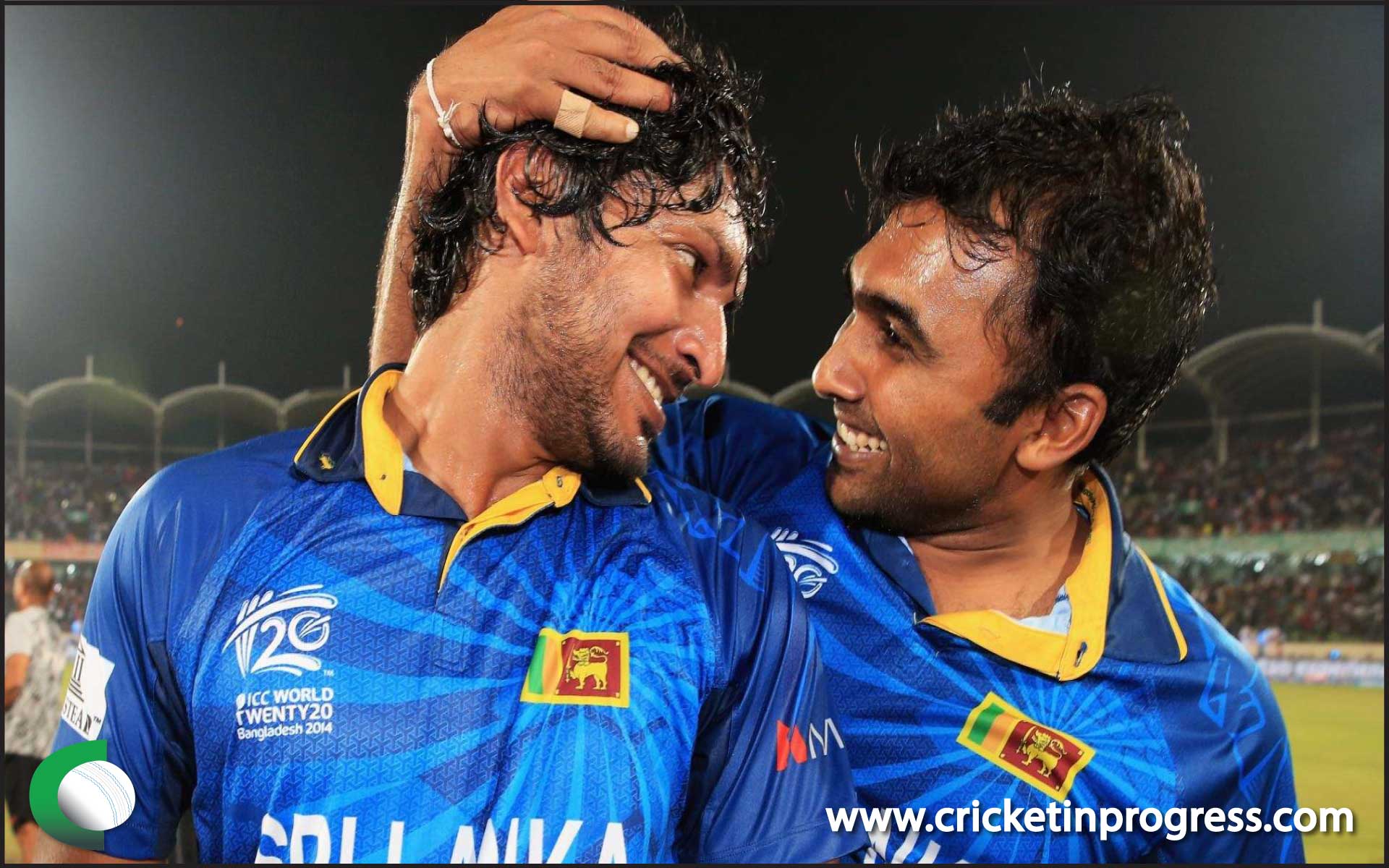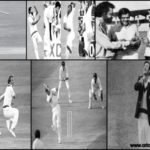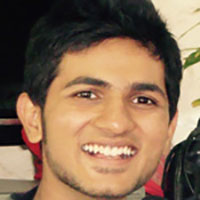What plotted Srilanka’s downfall?
Who doesn’t remember the finals of the T20 World Cup in 2014! What with stones being pelted at the house of Yuvraj Singh (which was uncalled for), for what could only be called a dismal finishing performance. Chasing 131 to win their first ICC Trophy since 2002, Sangakkara and co. made small work of the chase, as he, Mahela Jayawardene and Tillekeratne Dilshan scored 72% of the target. Lasith Malinga was an inspirational captain, often leading from the front with his impressive bowling performances. A perfect send-off to Kumar Sangakkara and Mahela Jayawardene from the shortest form of the game.
Recently, Sangakkara surfaced up once again for scoring 5 centuries in consecutive first-class innings, and almost a sixth. He did something just like this during the 2015 ICC Cricket World Cup, where he scored 4 consecutive centuries for Srilanka. Sangakkara has made it a habit to retire on a personal high. The kind of match winner Sangakkara was for Srilanka, the kind of assets he brought to the table, the kind of maturity he showcased on and off the field and the kind of gentlemanly nature he personified, least to say, Srilanka have failed to find an interim replacement for him, let alone a suitable replacement.
This brings me to my point. Srilanka was once a formidable force, a force to be reckoned with. By once I mean 4-5 years ago. They did finish as the finalists in the 2011 World Cup, made it to the semi-finals in the 2013 Champions Trophy, won the 2014 T20 World Cup, had a smooth slide into the quarter-finals of the 2015 World Cup. Yet, they enter the 2017 Champions trophy as minnows, a team even their supporters have written off before the start of the tournament. That’s the least of their problems though.
It can be notably seen that since Kumar Sangakkara, Mahela Jayawardene, Tillekeratne Dilshan retired from T20s, Srilanka have not had success in T20s. After they retired from ODIs in 2015-2016, Srilanka have tasted a lot more defeats in ODIs. Since they have retired from Tests, the 5-day scene of Srilanka is not as formidable as it was. Loss of form for Malinga wasn’t doing any good to them either. Untimely injuries to their regular captain Angelo Matthews hasn’t worked in their favour either.
To better put the case in point into perspective, I have carefully considered 4 time frames of International cricket – 19 February 2011 to 06 April 2014 vs 07 April 2014 to current, 19 July 2004 to 18 July 2010 vs 19 July 2010 to current. The first and second time frames help in identifying the impact the retirements of Kumar Sangakkara, Mahela Jayawardene and Tillekeratne Dilshan had on Srilanka’s batting performance while the third and fourth time frames help in understanding the life of Srilankan bowlers without Muttiah Muralitharan and the loss of form of Lasith Malinga.

Should we jump into numbers or should we identify the fundamental problems that Srilanka have to identify and rectify themselves. Let’s procrastinate the numbers for a little while. For starters, Srilanka face the biggest hurdle in their process of churning out new players. Retirements of legends and the downfall of Srilanka occurring consecutively one after the other is no co-incidence. Absence of a premier league in their country could be cited as one of the reasons as to why quality youth isn’t coming up. However, the problem doesn’t lie there; even if promising youngsters are coming up, for reasons oblivious to one and all, they are not able to sustain with consistent performers. Consider for example Kasun Rajitha and Dasun Shanaka, who impressed everyone in their debut T20 series against India in 2016. A lot of promise and 1 year on, nowhere to be seen.
While the factory of producing youngsters in Srilanka has less output, that in India and Australia have been manufacturing quality new players in a wholesale quantity. Much of this could be attributed to prevalence of excellent domestic structure, presence of good mentors (you know who I am talking about) to guide them. India and Australia have had a problem of plenty and at the same time, a stable core for the past 4-5 years. A perfect mix of youth and experience has always been maintained in their teams, something that hasn’t been the case for Srilanka.
Let’s dive into some interesting numbers to microscopically understand Srilanka’s problem within the 4 aforementioned timeframes. Between 19 February 2011 and 06 April 2014 (let’s call it Window 1), Srilanka maintained W/L(Wins per Loss) ratio of 2.333 in T20s and 1.170 in ODIs. Now, this was the time when heavy scoring of runs was carried out by Kumar Sangakkara, Mahela Jayawardene and Tillekeratne Dilshan. After their retirements, between 07 April 2014 and 31 May 2017 (let’s call it Window 2), the same W/L ratio feel to 0.526 in T20s and 0.794 in ODIs, a 77% and 32% drop respectively. For the same 2 windows, Australia’s W/L ratio in all 3 formats remained more or less the same, in fact improved in some. In India’s case, the W/L ratio in Tests improved drastically in Window 2 over Window 1 while that in ODIs and T20s remained very similar. Mind you, while there were some major retirements for Srilanka, there have been major retirements for India and Australia as well, namely, Michael Clarke, Shane Watson, M S Dhoni, Sachin Tendulkar, Rahul Dravid, VVS Laxman, Michael Hussey, etc.
19 February 2011 to 06 April 2014 Team
| Matches | Won | W/L Ratio | |
|---|---|---|---|
| AUSTRALIA | |||
| Tests | 37 | 19 | 1.727 |
| ODIs | 72 | 39 | 1.500 |
| T20 | 32 | 15 | 0.937 |
| INDIA | |||
| Tests | 30 | 12 | 1.000 |
| ODIs | 89 | 52 | 1.733 |
| T20 | 24 | 15 | 1.666 |
| SRILANKA | |||
| Tests | 29 | 7 | 0.636 |
| ODIs | 96 | 48 | 1.170 |
| T20 | 32 | 21 | 2.333 |
07 April 2014 to 31 May 2017 Team
| Matches | Won | W/L Ratio | |
|---|---|---|---|
| AUSTRALIA | |||
| Tests | 34 | 17 | 1.416 |
| ODIs | 68 | 45 | 2.142 |
| T20 | 20 | 10 | 1.000 |
| INDIA | |||
| Tests | 34 | 18 | 2.571 |
| ODIs | 54 | 34 | 1.888 |
| T20 | 29 | 18 | 1.800 |
| SRILANKA | |||
| Tests | 31 | 13 | 0.866 |
| ODIs | 76 | 31 | 0.794 |
| T20 | 29 | 10 | 0.526 |
Another set of interesting numbers that I deduced were some batting records. In Window 1, top spots for Srilanka’s leading run-scorers in all 3 formats were occupied by the big 3. They undertook the task of scoring majority of the runs for Srilanka and hence Srilanka’s batting was never found wanting. Their retirements from all formats have had a direct impact of Srilanka’s performances in that respective format. In Window 1, the top 5 batsmen from Srilanka scored 25 centuries in Tests, 22 in ODIs and 1 in T20s, while during Window 2, there were 20 in Tests, 16 in ODIs and 0 in T20s. Angelo Matthews has been doing some heavy run-scoring for Srilanka recently but it hasn’t been enough to get the team over the line on many occasions. In comparison, for Australia, if it was Michael Clarke scoring tons of runs in Window 1, it has been Steve Smith replicating that performance in Window 2. For India, it has been Virat Kohli doing majority of the run scoring in all 3 formats for the past 5 years. This goes on to show that Indian and Australian batsmen haven been taking up run-scoring responsibilities after some retirements; there hasn’t been a drought in run-scoring. In fact, centuries made and runs scored by top 5 batsmen for India and Australia in all 3 formats during these 2 windows have been drastically similar, sometimes even better in Window 2.
19 February 2011 to 06 April 2014 Batting
| Innings | Runs | Average | 100s | |
|---|---|---|---|---|
| AUSTRALIA | ||||
| Tests | ||||
| Michael Clarke | 66 | 3498 | 60.31 | 13 |
| David Warner | 56 | 2467 | 46.54 | 8 |
| ODIs | ||||
| Shane Watson | 47 | 1903 | 41.36 | 4 |
| Michael Clarke | 43 | 1755 | 48.75 | 3 |
| George Bailey | 37 | 1647 | 53.12 | 2 |
| T20 | ||||
| David Warner | 26 | 685 | 28.54 | 0 |
| Shane Watson | 22 | 619 | 29.47 | 0 |
| Aaron Finch | 16 | 592 | 37.00 | 1 |
| INDIA | ||||
| Tests | ||||
| Virat Kohli | 41 | 1721 | 46.51 | 6 |
| Cheteshwar Pujara | 27 | 1543 | 67.08 | 6 |
| ODIs | ||||
| Virat Kohli | 84 | 3962 | 55.02 | 15 |
| T20 | ||||
| Virat Kohli | 23 | 852 | 44.84 | 0 |
| SRILANKA | ||||
| Tests | ||||
| Kumar Sangakkara | 53 | 2907 | 60.56 | 11 |
| Mahela Jayawardene | 50 | 1792 | 37.33 | 5 |
| ODIs | ||||
| Kumar Sangakkara | 82 | 3801 | 52.06 | 8 |
| Tillekeratne Dilshan | 82 | 3069 | 42.62 | 9 |
| Mahela Jayawardene | 73 | 2393 | 35.19 | 4 |
| T20 | ||||
| Mahela Jayawardene | 23 | 709 | 37.31 | 0 |
| Tillekeratne Dilshan | 29 | 694 | 28.91 | 1 |
| Kumar Sangakkara | 25 | 605 | 31.84 | 0 |
07 April 2014 to 31 May 2017 Batting
| Innings | Runs | Average | 100s | |
|---|---|---|---|---|
| AUSTRALIA | ||||
| Tests | ||||
| Steve Smith | 62 | 3890 | 74.80 | 16 |
| David Warner | 63 | 2987 | 48.17 | 10 |
| ODIs | ||||
| Steve Smith | 58 | 2702 | 51.96 | 8 |
| David Warner | 50 | 2659 | 56.57 | 11 |
| T20 | ||||
| Glenn Maxwell | 15 | 519 | 39.92 | 1 |
| Aaron Finch | 13 | 422 | 35.16 | 0 |
| Shane Watson | 13 | 388 | 38.80 | 1 |
| INDIA | ||||
| Tests | ||||
| Virat Kohli | 56 | 2776 | 51.40 | 10 |
| Ajinkya Rahane | 55 | 2201 | 45.85 | 7 |
| ODIs | ||||
| Virat Kohli | 45 | 2121 | 55.81 | 8 |
| T20 | ||||
| Virat Kohli | 19 | 803 | 66.91 | 0 |
| Rohit Sharma | 20 | 625 | 32.89 | 1 |
| SRILANKA | ||||
| Tests | ||||
| Angelo Matthews | 52 | 2162 | 46.00 | 5 |
| Dimuth Karunaratne | 53 | 1820 | 35.01 | 5 |
| T20 | ||||
| Dinesh Chandimal | 22 | 454 | 22.70 | 0 |
How can I leave bowling out! For a moment, let’s forget the fact that Muttiah Muralitharan was one of the greatest bowlers of all time, the leading wicket-taker ever in Tests and an irreplaceable bowler. In that case, without even looking at numbers, one can conclude that Srilanka have face a dilemma in replacing Muralitharan with someone who can consistently take wickets for Srilanka. Barring Rangana Herath, albeit in Tests, no bowler, spinner in particular was able to sustain it at the International level. But, let’s face it – Rangana Herath is no youngster. Between 19 July 2004 and 18 July 2010 (Window 3), Muttiah Muralitharan was the tormentor-in-chief for Srilanka in Tests as well as ODIs. He was complemented well by Chaminda Vaas and Lasith Malinga. During this window, all bowlers presented impressive averages. If I were to take the average of averages of the top 7 bowlers in ODIs for Srilanka in this window, it would come down to 27.2. While, the same average between 19 July 2010 and 31 May 2017 (Window 4) would be 31. Muttiah Muralitharan was a match winner and took wickets everywhere in the world, whereas Rangana Herath is able to take loads of wickets in the sub-continent only. Moreover, Srilanka has failed to produce a good crop of fast bowlers who can be effective in all parts of the world.
19 July 2004 to 18 July 2010 Bowling
| Innings | Wickets | Average | |
|---|---|---|---|
| AUSTRALIA | |||
| Test | |||
| Shane Warne | 64 | 181 | 25.24 |
| Brett Lee | 78 | 171 | 30.12 |
| ODI | |||
| Brett Lee | 100 | 173 | 23.76 |
| T20 | |||
| Mitchell Johnson | 24 | 30 | 19.53 |
| INDIA | |||
| Test | |||
| Anil Kumble | 89 | 222 | 32.22 |
| Harbhajan Singh | 88 | 204 | 33.37 |
| Zaheer Khan | 81 | 159 | 31.82 |
| ODI | |||
| Harbhajan Singh | 123 | 134 | 36.24 |
| Irfan Pathan | 90 | 124 | 30.87 |
| T20 | |||
| Harbhajan Singh | 21 | 16 | 32.25 |
| SRILANKA | |||
| Test | |||
| Muttiah Muralitharan | 77 | 268 | 22.48 |
| Chaminda Vaas | 60 | 102 | 27.76 |
| ODI | |||
| Muttiah Muralitharan | 94 | 140 | 25.77 |
| T20 | |||
| Lasith Malinga | 28 | 34 | 20.64 |
19 July 2010 to 31 May 2017 Bowling
| Innings | Wickets | Average | |
|---|---|---|---|
| AUSTRALIA | |||
| Test | |||
| Nathan Lyon | 128 | 247 | 33.39 |
| Mitchell Johnson | 72 | 157 | 28.28 |
| ODI | |||
| Mitchell Starc | 65 | 129 | 19.88 |
| T20 | |||
| Shane Watson | 34 | 38 | 22.10 |
| INDIA | |||
| Test | |||
| Ravichandran Ashwin | 92 | 275 | 25.22 |
| Ishant Sharma | 95 | 149 | 37.39 |
| Ravindra Jadeja | 57 | 142 | 23.12 |
| ODI | |||
| Ravichandran Ashwin | 103 | 143 | 32.48 |
| Ravindra Jadeja | 96 | 125 | 33.20 |
| T20 | |||
| Ravichandran Ashwin | 43 | 50 | 21.68 |
| SRILANKA | |||
| Test | |||
| Rangana Herath | 107 | 302 | 25.51 |
| Suranga Lakmal | 64 | 82 | 45.29 |
| ODI | |||
| Lasith Malinga | 120 | 192 | 27.73 |
| T20 | |||
| Nuwan Kulasekara | 46 | 55 | 21.03 |
For Australia, there have been equally potent performers in both the windows. If it was Brett Lee, Shane Warne, Glenn McGrath and Jason Gillespie in Window 3, it is Nathan Lyon, Mitchell Johnson, Peter Siddle and Mitchell Starc in Window 4. Ditto for ODIs and T20s. In India’s case, going by sheer numbers of Tests, there has been a wonderful scene. Anil Kumble took 222 wickets, Harbhajan Singh captured 204 wickets and Zaheer Khan accumulated 159 wickets during Window 3. Dramatically enough, in Window 4, Ravi Ashwin has taken 275 wickets, Ishant Sharma has taken 149 wickets and Ravindra Jadeja has captured 142 wickets. More dramatically enough, in ODIs, Window 3 saw Harbhajan taking 134 wickets and Irfan Pathan taking 124 wickets, while Window 4 saw Ravi Ashwin taking 143 wickets and Ravindra Jadeja taking 125 wickets.
Long story short, while India and Australia have been able to find quality batsmen, quality bowlers and quality leaders to take the torch forward, Srilanka have failed to do so. Srilanka have come up in patches, players have shone in patches, but only to disappoint later. India and Australia have made sure that they have had well-defined transition phases where youngsters are given opportunities to play under key seniors who they one day might replace. Case in point, Michael Clarke was well groomed under Ricky Ponting and Steve Smith grew under Michael Clarke. M S Dhoni, although his own man, came up the ranks under Sourav Ganguly while Virat Kohli keenly observed M S Dhoni and took over the remains. In all the 4 cases, the transfer of baton was smooth and the relay continued even smoothly.
Luckily enough for Srilanka, it wouldn’t take an expert to identify this problem, if they haven’t already. They dug a pit for themselves by often going backwards in their selections and not having a future plan. Now they have fallen into this pit and it would take some doing to crawl back out and turn the tide. Not impossible, just difficult. India can be proactive and learn from this Srilankan episode; learn to handle youngsters efficiently, learn to give opportunities to deserving and promising players and learn to be futuristic. And if India is already all those things, just replace “learn“with “continue“and we’ll be good to go.












